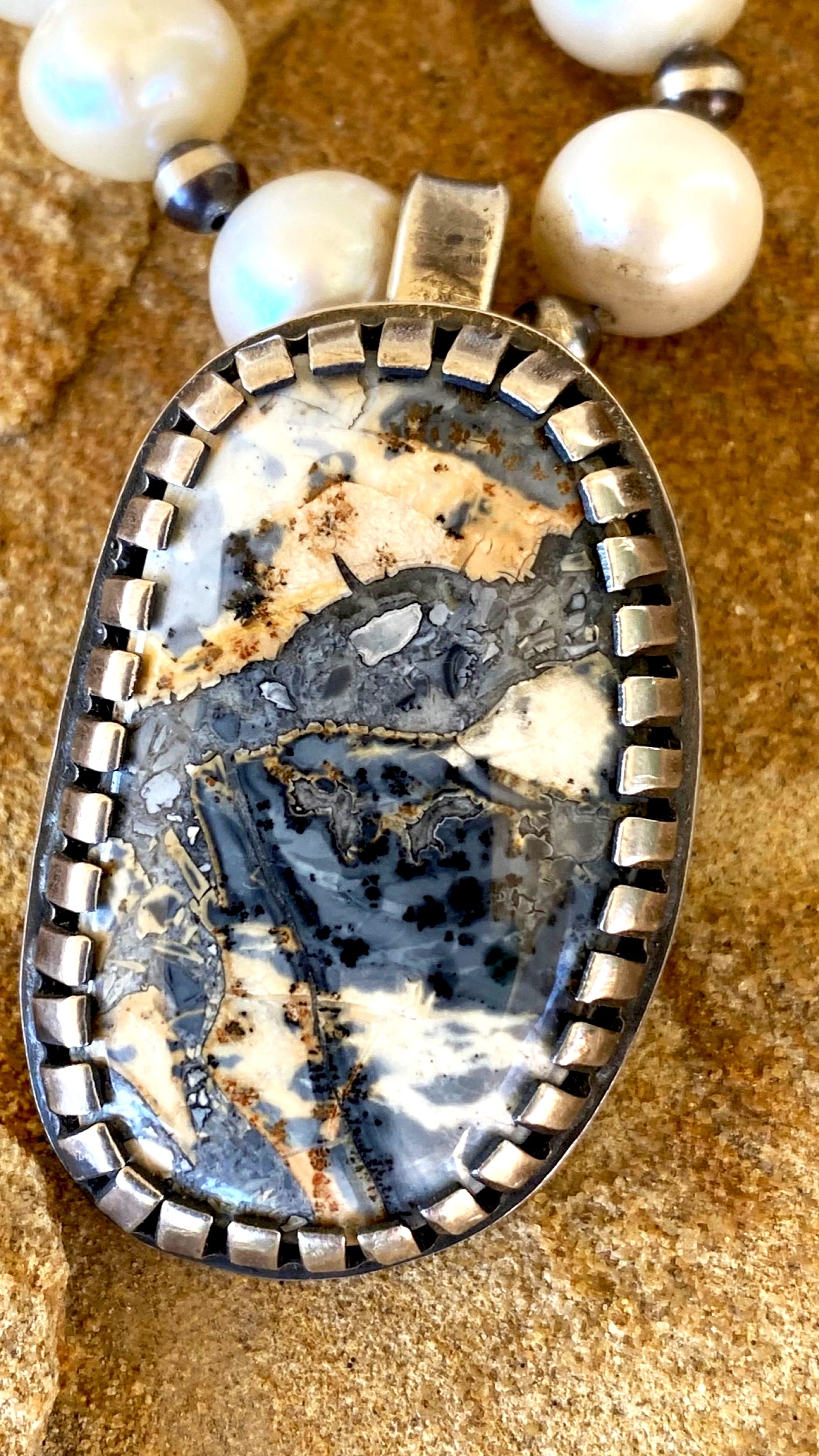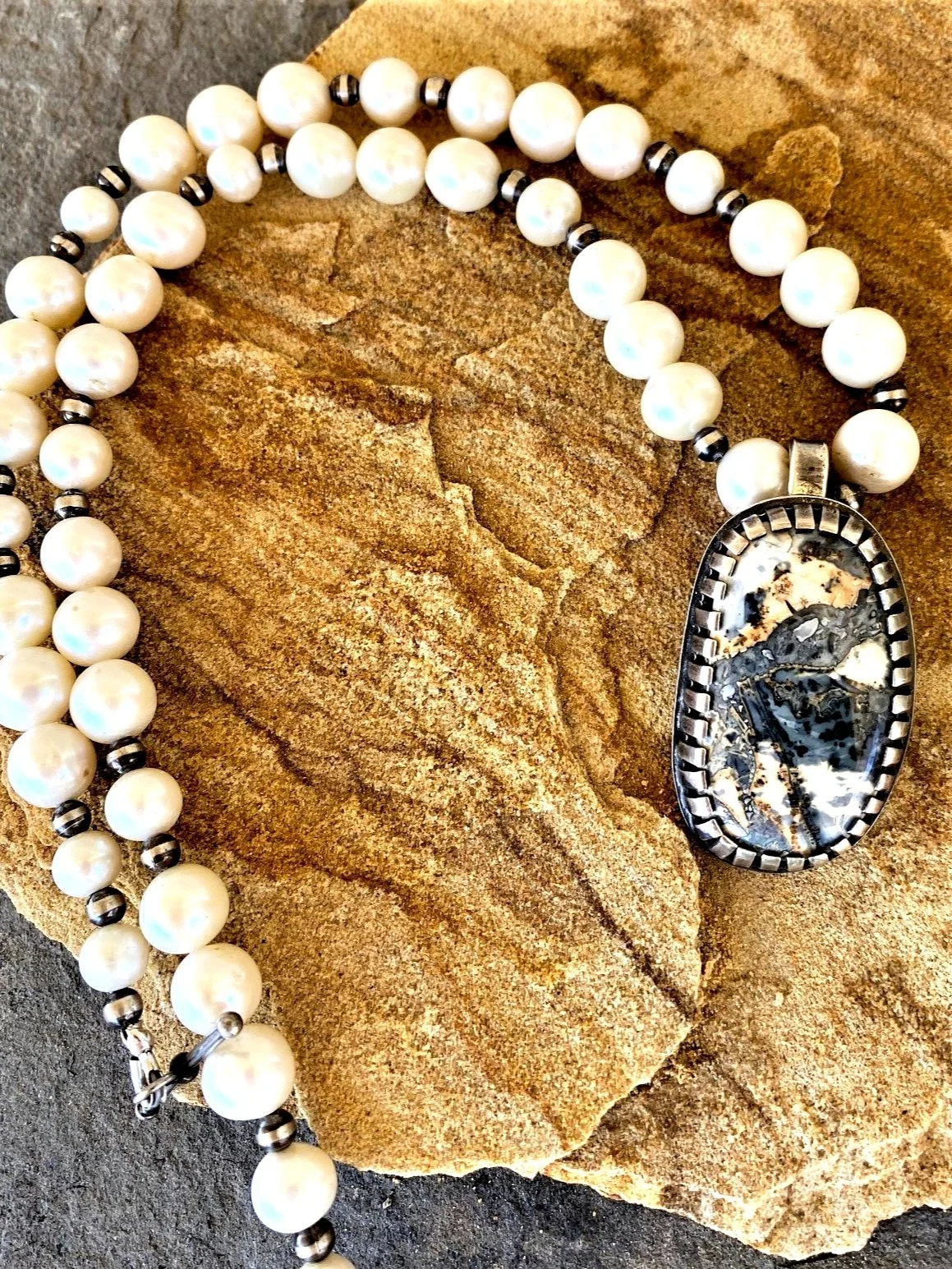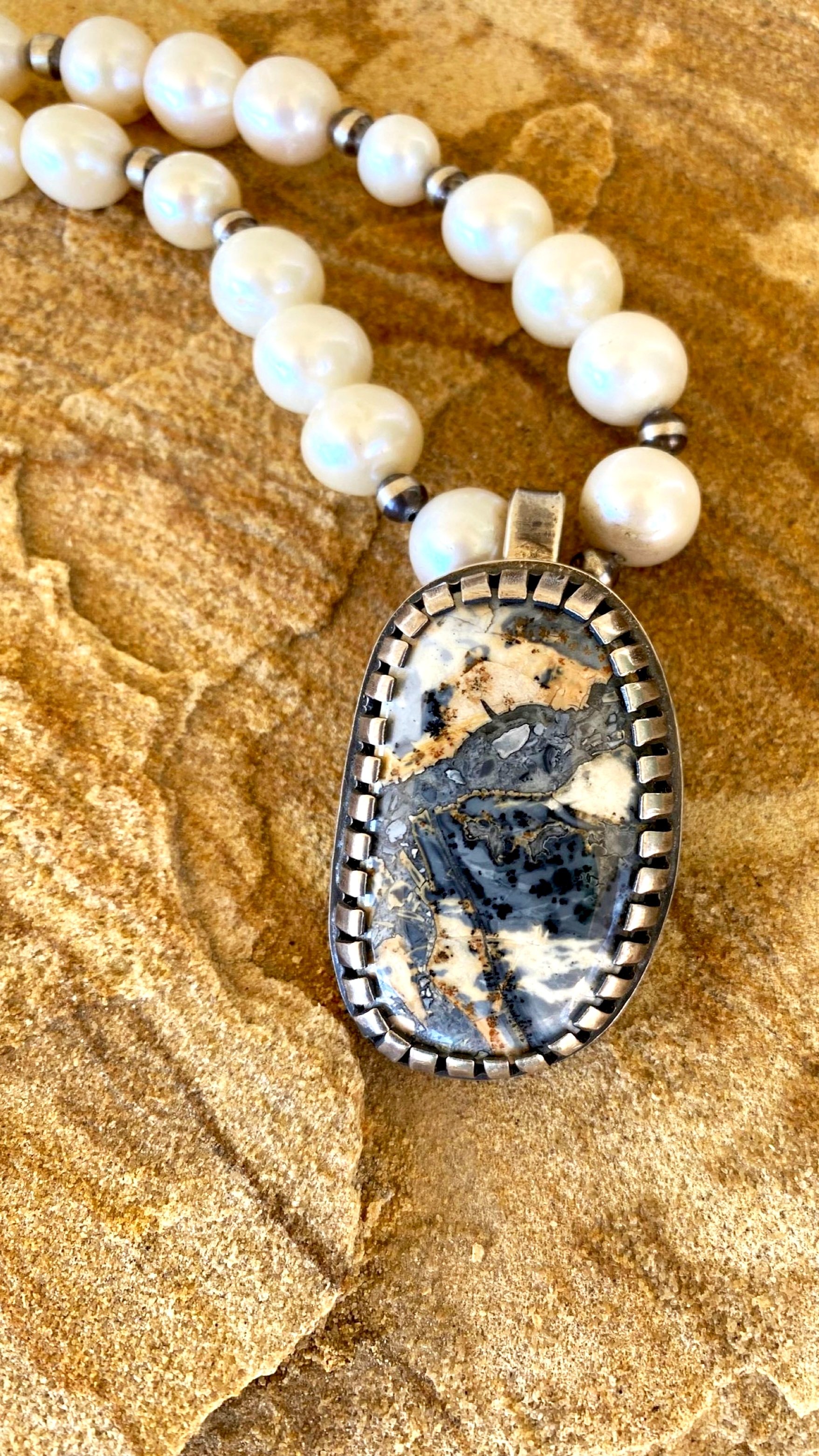- Necklaces
- Maligano Jasper and Freshwater Pearls
Maligano Jasper and Freshwater Pearls



Maligano Jasper and Freshwater Pearls
Maligano Jasper is named after a small village in Sulawesi, Indonesia. This material was originally found about six to seven years ago, but it seems like it’s just now making its way to the United States. Maligano Jasper is colorful with warm yellows, reds, beiges, and greys. It often contains rivers of agate running throughout, while other sections have floating jasper. This pendant is set in sterling silver surrounded by a serrated bezel. The pendant has a hook-style bail, which allows the pendant to be easily removed from the pearls in case you want to just wear a strand of pearls.
The freshwater pearls necklace is a great compliment to the colors in the Maligano Jasper. There are several Navajo Sterling Silver Pearls interspersed between the pearls. The Navajo pearls are handmade by Navajo artisans.
Freshwater pearls are created by using freshwater mussels in lakes, rivers and ponds. Most freshwater pearls on the market today come from rivers and lakes in China, although USA and Japan have a small fraction of the market. A freshwater mussel can have up to 50 pearls at a time (compared to the two to five pearls that saltwater oysters can contain).
All freshwater pearls have been cultured, meaning that they were grown in pearl farms using science and technology rather than in nature by accident. This is where a trained technician implants an irritant in the mussel to stimulate the formation of a pearl. While a bead nucleus is commonly used in Akoya and other saltwater pearl farming, with freshwater pearls the method is somewhat different. Here, the tissue of a donor mussel is placed in the host mussel to stimulate nacre secretion.
The result of this method is that freshwater pearls are composed entirely of nacre, as they do not contain a bead nucleus. The thicker nacre generally results in a durable, beautiful pearl.
Maligano Jasper is named after a small village in Sulawesi, Indonesia. This material was originally found about six to seven years ago, but it seems like it’s just now making its way to the United States. Maligano Jasper is colorful with warm yellows, reds, beiges, and greys. It often contains rivers of agate running throughout, while other sections have floating jasper. This pendant is set in sterling silver surrounded by a serrated bezel. The pendant has a hook-style bail, which allows the pendant to be easily removed from the pearls in case you want to just wear a strand of pearls.
The freshwater pearls necklace is a great compliment to the colors in the Maligano Jasper. There are several Navajo Sterling Silver Pearls interspersed between the pearls. The Navajo pearls are handmade by Navajo artisans.
Freshwater pearls are created by using freshwater mussels in lakes, rivers and ponds. Most freshwater pearls on the market today come from rivers and lakes in China, although USA and Japan have a small fraction of the market. A freshwater mussel can have up to 50 pearls at a time (compared to the two to five pearls that saltwater oysters can contain).
All freshwater pearls have been cultured, meaning that they were grown in pearl farms using science and technology rather than in nature by accident. This is where a trained technician implants an irritant in the mussel to stimulate the formation of a pearl. While a bead nucleus is commonly used in Akoya and other saltwater pearl farming, with freshwater pearls the method is somewhat different. Here, the tissue of a donor mussel is placed in the host mussel to stimulate nacre secretion.
The result of this method is that freshwater pearls are composed entirely of nacre, as they do not contain a bead nucleus. The thicker nacre generally results in a durable, beautiful pearl.